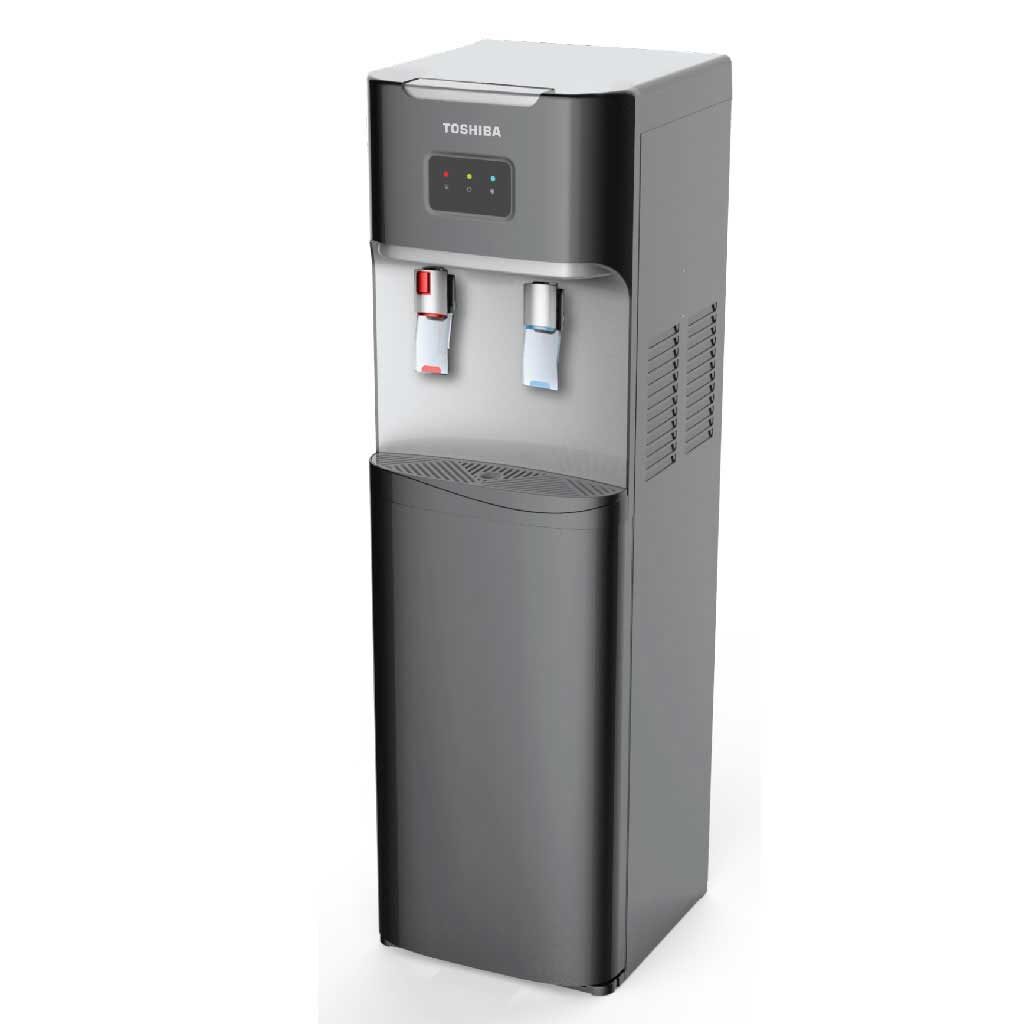One of the most handy appliances that a modern home should have is a water dispenser. Not only can it provide a refreshing ice-cold water on hot summer days, but it can also give you a source of instant hot water for use during cold and rainy days. But have you ever wondered how this machine can make hot and cold water from the same unit?
A water dispenser (sometimes called a water cooler) works by keeping water in two separate reservoirs that are equipped with either a cooling coil or a heating element to produce hot and cold water.
In the rest of this article, we will fully explain how this works, and the different types of water dispensers available in the market.
How a water dispenser makes cold water
A water dispenser makes cold water the same way a refrigerator makes its compartments cold.
Basically, both of these appliances use the power of evaporation to create cold air. Notice how rubbing alcohol on your hands create a cooling effect over the area? That is caused by the evaporating alcohol. Both a refrigerator and a water dispenser will harness that power, but instead of alcohol, they use a refrigerant gas called Freon.
Also, instead of letting the Freon evaporate to the air, both appliances keep it in a closed system (the technical term is hermetic system) where the Freon is pumped by the compressor to the evaporator (also known as the cooling coils) and the condenser where it will be evaporated and condensed over and over again. This is how both of these appliances make cold water.
How a water dispenser makes hot water
To make hot water, a water dispenser keeps a small amount of water in a heater tank. A water dispenser heats water the same way as an electric kettle or a coffee maker does, where a heating element is activated to make hot water. The only difference being that the water dispenser makes hot water automatically as long as there is water in the water gallon, while the electric kettle will be manually filled up with water.
Types of water dispensers
There are several types of water dispensers available in the market. While they have the same function, these types differ in their level of convenience, amount of hot and cold water storage, and their price points.
Top Loading Water Dispenser

This is the most common type of water dispenser that you will find in most homes and offices. The top loading water dispenser works by having a 5-gallon water container placed upside down on the top of the dispenser. With a plastic “spike”, the water dispenser breaks in to the water container, and uses gravity to push the water down to the reservoirs.
Typically, they have two faucets for hot and cold water. However, there are some models that have an additional “normal” or room temperature faucet.
One of the primary drawbacks of the top loading type is that the water gallon can be too heavy for some to heave on top of the water cooler. This is the problem that bottom loading models are designed to solve.
Bottom Loading Water Dispenser

As the name implies, a bottom loading model will have its water gallon located at the bottom. To get the water into the reservoirs, it uses a pump to push the water where it needs to be. While the added pumps will consume more electricity in the long run, the convenience it provides is invaluable especially for senior citizens or those who cannot be bothered with lifting a heavy 5-gallon water container.
Another trade off of the bottom loading type compared to the top loading one is that it is more expensive upfront. On average, it will cost you around ₱4,178 more for a bottom loading model.
Mini Water Dispenser

Table top models are basically a smaller form of the top loading water cooler models. It is small enough to fit on a countertop which is ideal for people with a limited floor space. On average, they are cheaper by ₱3,335.6 compared to the full-sized models.
You’ll still have to heave a 5-gallon water container on top though. Also, its reservoir is smaller compared to the full-sized models, so it may not be the best fit for those who will use the dispenser frequently.
Conclusion
We hope that this article helped you get a clearer idea of how a water dispenser works and the different types of configurations that are available in the market. Still unsure of which type to choose? Here are some quick pointers for you:
- If you want a simple and versatile model, go with the top loading type.
- If your living space is small, go with the mini water dispenser model.
- Are you an older person or do you not have enough strength to load the dispenser? Go with the bottom loading one.

Miguel Mores worked for 5 years as a member of the product management team for a home appliance company in the Philippines. He started 101appliance to answer the most common customer questions that he has encountered during his time in the industry. He now works in the digital marketing field and manages a small online bookstore on the side.


